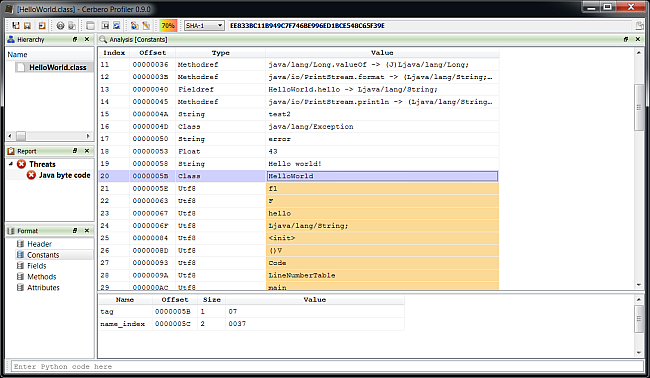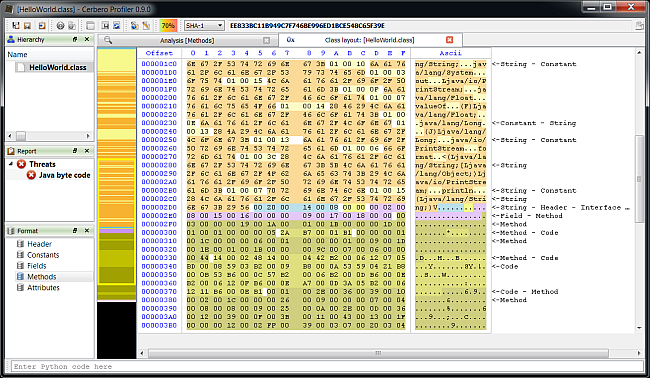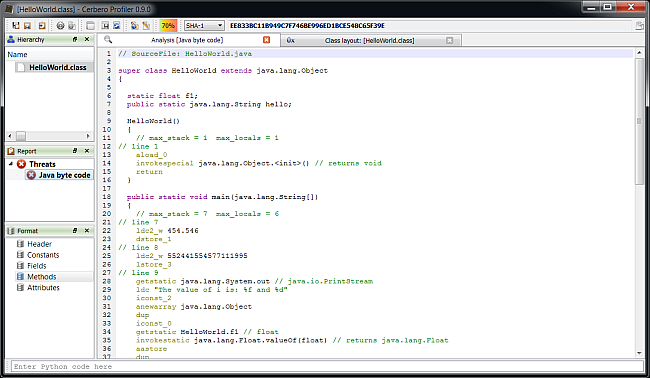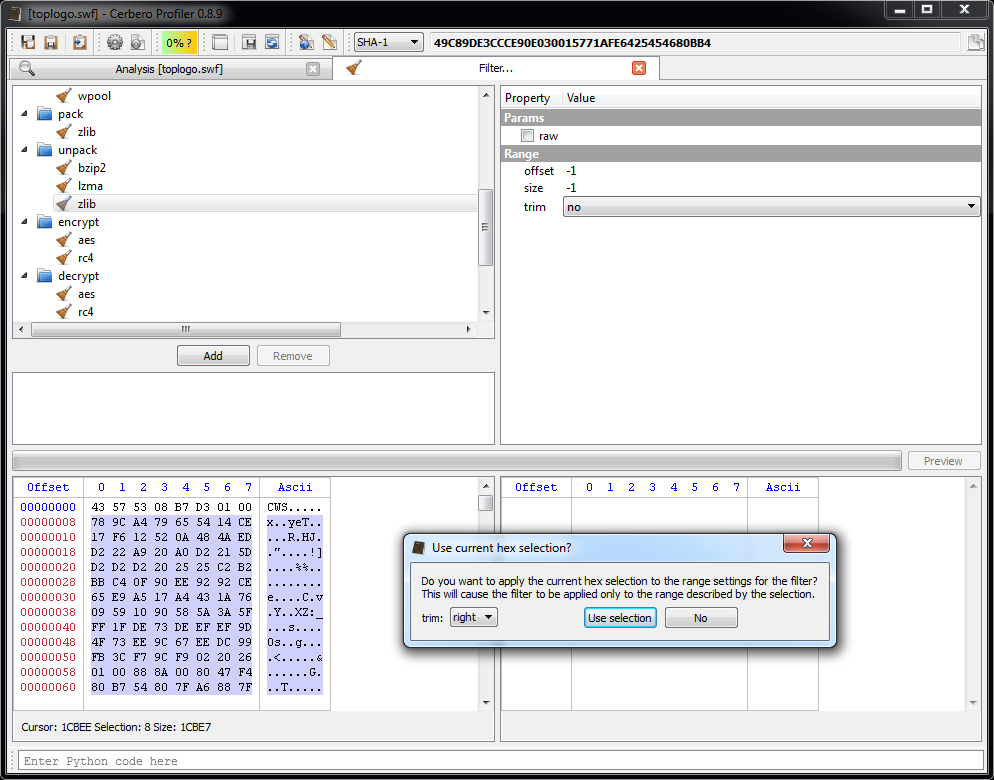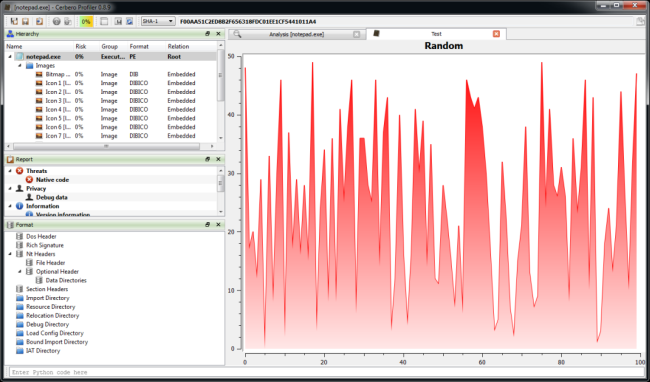The upcoming 0.9.0 version of the Profiler adds support for Java class files. This will be especially useful for malware analysis. The support includes: disassembler, format views and layout ranges. Let’s see some screeshots of the format itself first.
Here’s a view of the constants:
Note: Utf8 strings are highlighted in orange just to distinguish them.
Here’s a view of the methods with their attributes:
And here’s the layout ranges view:
Again strings are in orange, while the actual code of a method is in a slightly lighter green than the method itself.
Since the format of class files is contiguous, it’s extremely easy to use layout ranges to create a new custom class file using the hex editor.
And finally, the disassembler:
The output shown in the screenshot above:
// SourceFile: HelloWorld.java
super class HelloWorld extends java.lang.Object
{
static float f1;
public static java.lang.String hello;
HelloWorld()
{
// max_stack = 1 max_locals = 1
// line 1
aload_0
invokespecial java.lang.Object.() // returns void
return
}
public static void main(java.lang.String[])
{
// max_stack = 7 max_locals = 6
// line 7
ldc2_w 454.546
dstore_1
// line 8
ldc2_w 552441554577111995
lstore_3
// line 9
getstatic java.lang.System.out // java.io.PrintStream
ldc "The value of i is: %f and %d"
iconst_2
anewarray java.lang.Object
dup
iconst_0
getstatic HelloWorld.f1 // float
invokestatic java.lang.Float.valueOf(float) // returns java.lang.Float
aastore
dup
iconst_1
lload_3
invokestatic java.lang.Long.valueOf(long) // returns java.lang.Long
aastore
invokevirtual java.io.PrintStream.format(java.lang.Stringjava.lang.Object[]) // returns java.io.PrintStream
pop
// line 10
getstatic java.lang.System.out // java.io.PrintStream
getstatic HelloWorld.hello // java.lang.String
invokevirtual java.io.PrintStream.println(java.lang.String) // returns void
// line 13
try
{
getstatic java.lang.System.out // java.io.PrintStream
ldc "test2"
invokevirtual java.io.PrintStream.println(java.lang.String) // returns void
}
catch (java.lang.Exception) goto loc_57
// line 18
goto loc_67
// line 15
loc_57:
astore 5
// line 17
getstatic java.lang.System.out // java.io.PrintStream
ldc "error"
invokevirtual java.io.PrintStream.println(java.lang.String) // returns void
// line 19
loc_67:
return
}
static void ()
{
// max_stack = 1 max_locals = 0
// line 3
ldc 43
putstatic HelloWorld.f1 // float
// line 4
ldc "Hello world!"
putstatic HelloWorld.hello // java.lang.String
return
}
}
And the original source file:
class HelloWorld
{
static float f1 = 43;
public static String hello = "Hello world!";
public static void main(String[] args)
{
double d1 = 454.545774;
long l1 = 552441554577111995L;
System.out.format("The value of i is: %f and %d", f1, l1);
System.out.println(hello);
try
{
System.out.println("test2");
}
catch (Exception e)
{
System.out.println("error");
}
}
}
There’s yet more to come. Stay tuned. 🙂
